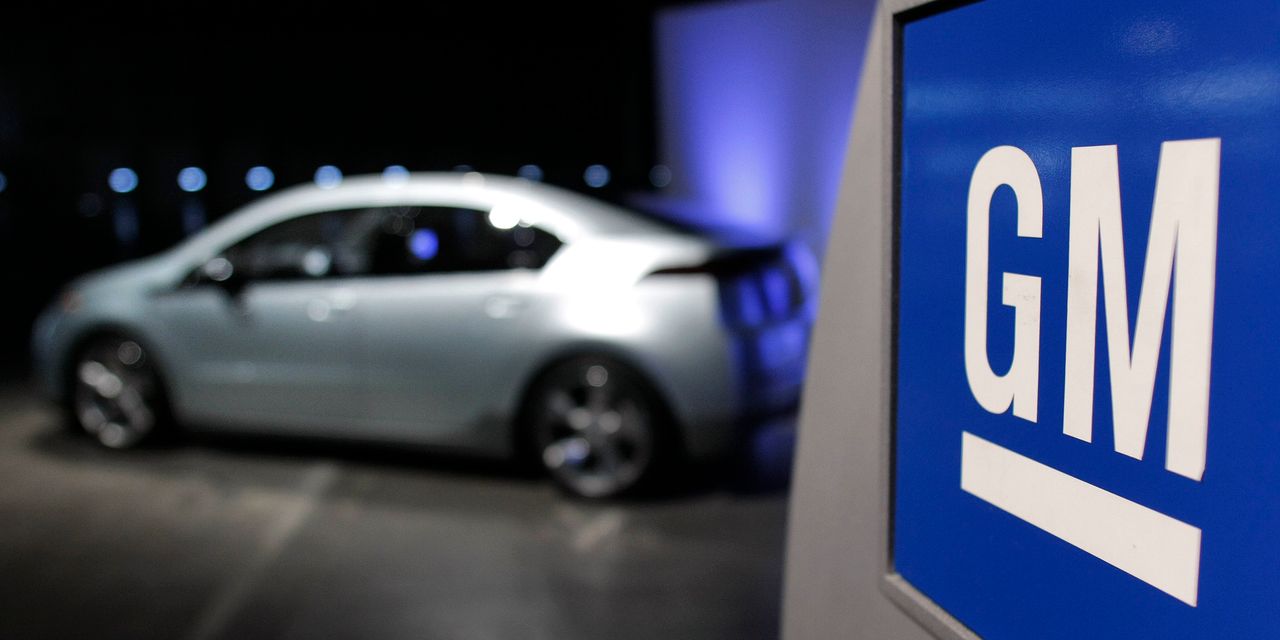Costs for electric vehicles are coming down, but not fast enough to keep profit margins for traditional auto makers stable. That makes long-term EV profitability a “critical risk” for traditional car manufacturers, according to one Wall Street bear.
Wednesday, Wells Fargo analyst Colin Langan updated his cost analysis comparing internal combustion engine, or ICE, vehicles with BEVs, short for battery-electric vehicles.
A lot has changed, prompting the update. For starters, prices for lithium, a key component of lithium-ion batteries that power BEVs, have dropped dramatically. And new tax credits for U.S. buyers went into effect in January. A tax credit doesn’t lower an EV maker’s cost, but it lowers the cost for an EV buyer, which gives an auto maker the ability to still make money producing a vehicle with higher costs.
The good news is EV costs are coming down. When Langan ran his analysis in May 2022, he concluded that an EV was almost $10,000 more to build than an ICE vehicle. Batteries cost roughly $14,000, while the motor and battery control system cost roughly $3,000. A traditional engine and transmission cost about $7,000.
Today, Langan believes EVs cost about $7,000 more to make than an equivalent ICE vehicle. The big change is in battery components, which are down about $3,000 per vehicle. The engine and transmission still cost about $7,000 by his estimation.
Benefits from new government investment incentives to build battery capacity in the U.S., could drive battery component costs down about $2,700, he added in his report. Coupled with the $7,500 purchase tax credits that were included in the inflation reduction act and BEVs could end up with an advantage over ICE vehicles down the road.
But Langan believes higher lithium prices in the future could eat away at that advantage. What’s more, he isn’t sure buyer tax credits will stay forever.
“The U.S. Congressional Budget Office budget estimated IRA BEV benefits will cost about $40 billion from 2023 to 2031,” wrote Langan. “However, we estimate the cost would be greater than $250 billion, as 67% of U.S. sales will need to be BEV by 2032 to comply with EPA rules.” Republicans have already included IRA EV spending cuts in their new budget, he adds.
Overall, Langan estimates that in 2022 car maker operating profit margins were about 7.3%, which worked out to a profit per vehicle of about $2,500. With EV cost an estimated $7,000 higher than ICE vehicles, he isn’t sure profit margins can be maintained.
The EV profit conundrum is one reason he rates both shares of
Ford Motor
(ticker: F) and
General Motors
(GM) Sell. His price target for Ford stock is $10. For GM, it’s $30.
Langan is a bear. He has the lowest target prices for Ford and GM shares tracked by FactSet. Others on Wall Street are more positive. The average analyst price target for Ford stock is about $13.50. The average analyst price target for GM stock is about $46.
Ford closed Wednesday at $11.87, up 0.1%, GM closed at $33.08, down 0.6%.
Overall, 33% of analysts covering Ford stock rate shares Buy and about 56% of analysts covering GM stock rate shares Buy. The average Buy-rating ratio for stocks in the S&P 500 is about 53%.
Auto makers, of course, believe they can make money selling EVs. Ford’s goal is to generate an 8% operating profit margin ratio by 2026 in its EV business. GM believes its EV business will be profitable in 2025.
A lot of the forecast improvement comes from scale—selling more EVs made at a fixed number of facilities. But Langan’s per unit cost gaps would remain if the car companies did nothing about them.
They are trying. Auto makers believe battery costs can fall 40% to 50% by the middle of this decade. The reductions come from improving production technology, scale, and starting their own battery-making capacity.
There are other ways to cut costs. Langan’s cost estimates are based on batteries that use nickel and cobalt. That is a relatively expensive chemistry. Many auto makers today, including
Tesla
(TSLA), are switching some models to iron-based battery chemistries. That can lower battery cell costs by roughly 15%, or knock about $1,000 off the cost of making an EV today.
EV profitability will probably be the defining issue of the car industry this decade. EVs, of course, can be sold profitably. Just follow the leaders. Tesla produced an operating profit margin of 11% in Q1 even as it slashed prices for its vehicles. What’s more, BYD (1211. Hong Kong), the largest maker of EVs in China, is profitable despite selling cheaper vehicles than Tesla.
While EV profits are a significant long-term issue for investors to mull over, there are more pressing things on their minds, such as the state of the current economy. Rising interest rates and declining vehicle affordability has weighed on car stocks lately. GM and Ford shares are down roughly 14% and 10%, respectively, over the past 12 months. The
S&P 500
is up about 3% over that span.
Write to Al Root at [email protected]
Read the full article here




